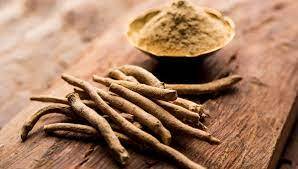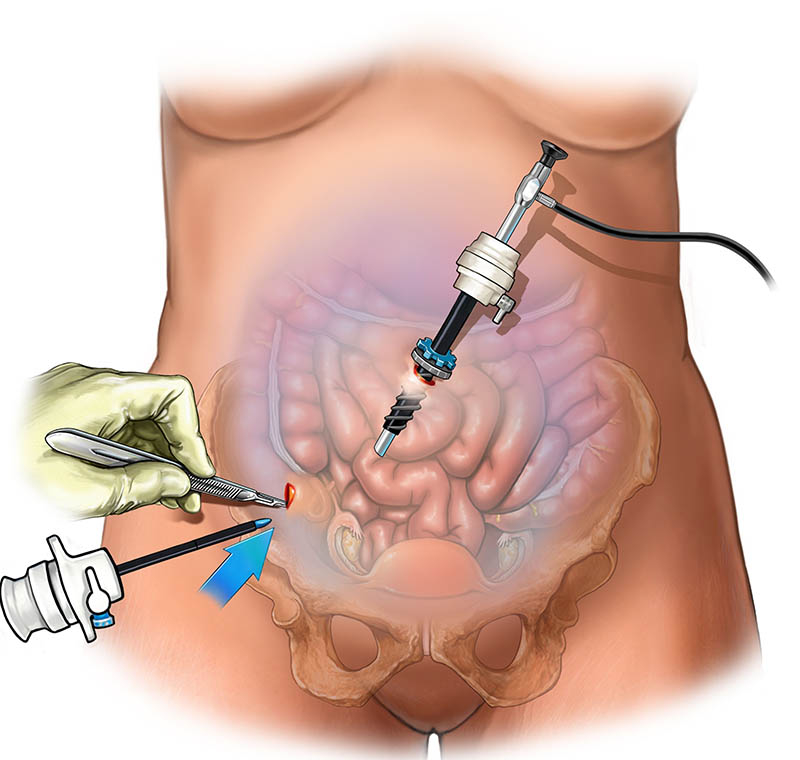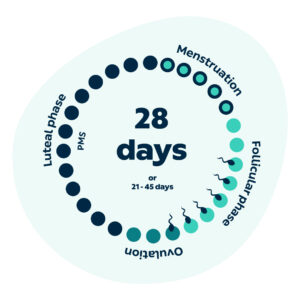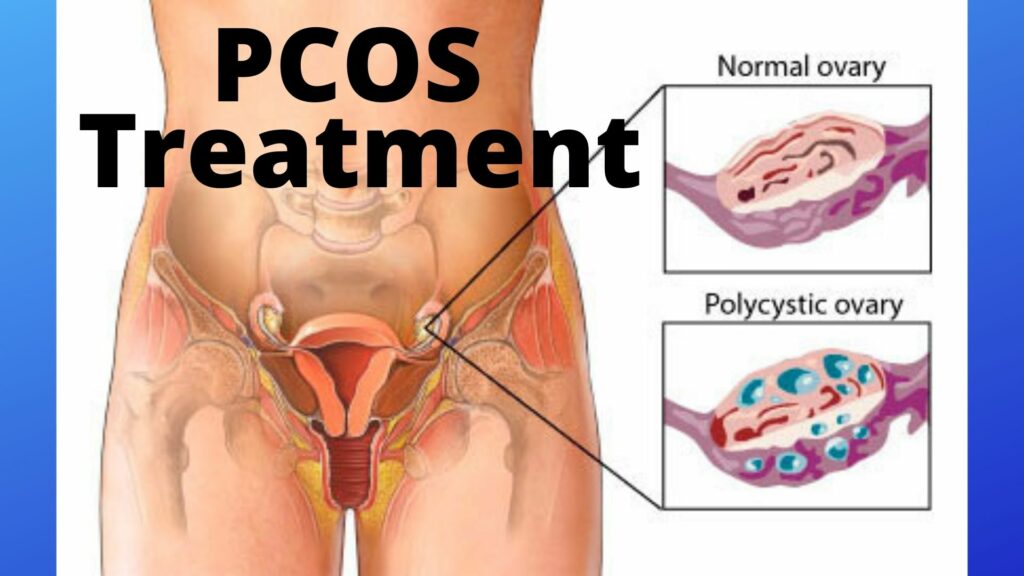Contents
4 Possible Modes of PCOS Treatment
PCOS is a syndrome that is quite uncertain to be treated. Women with PCOS find it challenging to figure out the best method to get rid of PCOS. There are several modes in which you can take the treatment of the syndrome, but you must consult your doctor before taking any medication, even if it is something from your home and nature itself. The treatment of PCOS has a lot to do with what you eat, and how you eat. So, you must be very cautious about the intake of food items.
There are four basic modes of treatment for PCOS, which are as follows:
- Ayurvedic treatment
- Surgical method
- Yoga and exercise
- Home remedies
In this article, we will come about all four methods in a comprehensive manner.
Ayurvedic Treatment For PCOS Treatment
Ayurvedic treatment involves herbs, therapies, diet, and lifestyle changes. There are certain Herbs that you can use in your treatment of the syndrome and they have been proven to be effective in many cases:
Ashwagandha

The other name of Ashwagandha is Indian ginseng or winter cherry. It has been proven to be effective in balancing cortisol levels. It also facilitates the treatment of insulin resistance and therefore, it can be used as an aid to improve the symptoms of PCOS.
Cinnamon

Harvested from a cinnamon tree, the spice has proven itself to be effective in treating the syndrome to a great extent. A study done in 2007 states that cinnamon has been proven to be effective in the treatment of insulin resistance. If we leave it untreated, then it can come out to be a factor of the syndrome and result in fatal heart diseases, like cardiac arrest. Another study done in 2014 states that cinnamon has been effectively used to regulate the menstrual cycle in people with PCOS.
Turmeric
Some studies show that turmeric is one of the most effective herbs that people can use to treat various problems. One such problem is PCOS. Turmeric takes its yellow color from curcumin, which is an anti-inflammatory agent. An experiment was done in the year 2017 in which PCOS was induced in certain rats. The infected rats were given Ayurvedic treatment by using turmeric. The study shows that the herb is effective in decreasing insulin resistance in the body, thereby reducing the chances of fatalities in people.
These are a few herbs that people can use if they are suffering from the syndrome. At the same time, they can facilitate their treatment by practicing some physical exercises and yoga regularly.
An Ayurvedic practitioner may also recommend certain yoga poses, also called asanas, such as:

- Reclining Butterfly Pose (Supta Baddha Konasana)
- Bharadvaja’s Twist (Bharadvajasana)
- Mill Churning Pose (Chakki Chalanasana)
- Corpse Pose (Shavasana)
He may also recommend meditation and breathing exercises, known as pranayamas, to help relieve stress.
Dietary Changes To Treat PCOS
Along with all of these exercises and herbs, the most important thing that you must follow is a healthy diet. According to do a study of Ayurveda, there are certain things that you must add and subtract in your diet to facilitate your treatment of PCOS:

- You must reduce the number of saturated fats, like red meat, and deep-fried food items.
- Reducing the intake of salt can also help you to some extent to lessen the impact of the symptoms.
- You must eat healthy fruits, green vegetables, and whole grains to maintain a balanced diet.
- Avoiding refined sugar, sugary foods, beverages with added sugar, and artificial sweeteners may also facilitate your treatment of PCOS.
- You can eat bitter gourd as a vegetable or drink its juice. This will help control blood sugar levels. Amla or Indian gooseberry also has a similar effect.
- Fenugreek leaves and tulsi or basil will help maintain insulin levels. PCOS patients have high levels of insulin, as it remains unused in the body, increasing blood sugar levels.
- A tablespoon of honey, mixed with lemon and water is good for your sweet craving and weight control.
Physical exercise and Yoga
Yoga is one of the best natural therapies prescribed by experts to treat PCOS. It strengthens the patients to fight against the odds, like weight gain, hormonal imbalances, and others. Here you will find certain yoga asanas that can help you fight the symptoms of the syndrome.
Reclining Butterfly Pose (Suptbandhkonasan)
Here’s how you do it:

- First, you need to sit on the floor and extend your legs. Bring the soles of your feet together and keep your knees out to the side. Your legs will be shaped like a diamond.
- Lie back on the floor while placing your hands on the belly.
- Take 5 to 10 deep breaths and come back slowly.
- To come out of the posture, give me to roll on your sides using your hands to help you come back to sitting.
There are many benefits of trying this butterfly pose when you are a patient of PCOS. You can see unexpected results within 12 weeks if you practice regularly for 10 minutes. The poster helps stimulate the abdominal organs, like ovaries and urinary bladder. It is also helpful in stretching the muscles of the inner thighs and groin area and also prevents irregular periods and stress.
Sun Salutation (Surya namaskar)
There are twelve prominent poses in Surya Namaskar that can help you fight the signs of PCOS. These poses are as follows:

- Pranamasana (Prayer Pose)
- Hasta Uttanasana (Raised arms pose)
- Hastapadasana (Hand to foot pose)
- Hastapadasana (Hand to foot pose)
- Dandasana (Stick pose)
- Ashtanga Namaskar (salutation with eight parts of the body)
- Bhujangasana (Cobra Asana)
- Adho Mukha Ivana (Downward facing down)
- Ashwa sanchalanasana (Equestrian Pose)
- Hastapadasana (Hand to foot pose)
- Hasta Uttanasana (Raised arms pose)
- Tadasana
If you practice Sun salutation poses at least five times a day, then there is a scope of looking towards positivity, weight loss, improved lipid profile, achievement of the lower waist to hip ratio, and regulation of the menstrual cycle. It should be a part of your daily life if you are suffering from Irregular periods, PCOS, or PCOS.
Anulom Vilom
Here is how you do it!

You need to begin by sitting down in padmasana, close your eyes, and put your hands on your knees to rest. With the help of your right thumb, you need to block the right nostril of your nose. Slowly inhale and exhale with the left one. Repeat the same process for about 15 minutes with an entire concentration on breathing. Keep changing the nostril to be blocked after fixed intervals of time.
PCOS, being a psychosomatic disorder, needs special psychic and somatic treatments. You can practice Anulom Vilom for at least 10-15 minutes every day to see effective results.
It helps to purify the energy channels inside the body and allows a resistance-free flow of positive energy to provide the relaxation of the mind, soul, and body.
Bow Pose (Dhanurasana)
Here is how you do it.

First, you need to lie down on your belly and place your palms upwards. Now, bend your knees so that your heels come closer to your buttocks. Pull your hands back so that you can touch your ankles and take a hold of them. Now, take a deep breath and lift your heels away from your buttocks. Simultaneously, lift your thighs upwards. Make sure that you keep your back muscles softer. When your belly is pressed against the floor, it will be challenging for you to breathe. Try to breathe more but do not force yourself towards it. Try to hold the pose for the next 20-30 minutes. Release your body as you exhale. Lie down quietly or some time to let your body take a few breaths. Repeat the whole process 2 to 3 three times a day to see the best results.
This asana helps in reducing your stress levels and anxiety. Repetition of this asana three times a day will let you increase the circulation in the pelvic region and help your organs, like neck, back, shoulders, and legs; all at once. It also helps you to get relief at the time of menstrual discomfort.
Do not try this posture if you are suffering from high or low blood pressure, migraine, insomnia, serious lower back, or injury.
Cobra Pose (Bhujangasana)
Here is how you do it.

First, you need to lie down on the floor and stretch your legs backward. The tops of your feet should touch the floor. Spread your hands on the floor, and stretch your elbows back towards the body. Apply force to press the tops of your feet, thighs, and pubis firmly towards the floor. Take a deep breath and begin by straightening your arms and lifting your chest region off the floor. Make sure you go to a height that you can easily attain. Otherwise, you will end up having cramps in the stomach. Afterward, you need to press the tailbone towards the pubis and lift it towards the naval. Do not harden your buttocks, leave them loose. Hold the pose for the next 15-20 seconds, holding the breath simultaneously. Release the pose as you exhale down.
This posture helps you to stretch out the abdominal organs. It also boosts ovarian functions. You may not be able to do the full cobra pose, all at once. But make sure that you do not give up there. Keep practicing and you will reach there one day.
Breathing Exercise (Kapalbhati Pranayam)

To practice this type of yoga, first, you need to sit comfortably on the floor with your spine erect. Take a deep breath. Pull your navel backward towards your spine, as you exhale. Do this exercise with as much comfort as you can. You may keep your right hand on the stomach to feel the abdominal muscles contract. As you relax down, the breath will flow automatically inside your lungs. Once you complete 20 rounds of the process, you will be able to complete one round of Kapal Bhati breathing exercises. You will be able to experience a positive sensation inside your body. If you find yourself comfortable with the posture, do two more rounds of it.
It is a brilliant breathing exercise that helps the patients to fight oxidative stress, problems in the blood circulation, and other issues in glandular secretion. It also helps in weight loss by having a positive influence on the pancreas by regulating its secretion.
These are all the yoga asanas that you can practice at home if you want to treat your PCOS naturally. Make sure that you do not force your body to adapt itself to complete any particular posture of yoga. Do it as much as you can to see the effective results. Know that you will improve with time.
This is everything that you need to know about the yoga and exercises that you can inculcate in the treatment of the syndrome.
Surgical Methods
Surgeries are what your doctors always suggest to you. Implementing a surgery for your PCOS treatment needs that your doctor must know about the symptoms and your medical history. There is only one such surgery that has the maximum success rate, which is Laparoscopic ovarian drilling. Surgical treatment can trigger the ovulation process in women who have PCOS. In this surgery, electrocautery or a laser is used to destroy the infected parts of the ovaries.
This surgery is not very common but it can be a good option for women who are not ovulating even after losing weight and trying certain medicines.

The drilling is usually done through a small incision called laparoscopy with the help of general anesthesia. The surgeon makes a small cut in the abdomen and places a tube to inflate it. The incision is done with the help of a small amount of carbon dioxide gas so that he can insert the viewing instrument called a laparoscope. The surgeon needs to make sure that he does not cause damage to the internal organs while inserting the device. Surgical instruments can easily be inserted in the same incision or other small incisions in the pelvic area. The incisions are pretty small, which is why the surgery is often called Band-aid surgery.
Risks Factors Of Laparoscopy
Now, you must know what happens after the surgery. You will be allowed to go home on the same day and do your normal activities within 24 hours. Returning to your normal activities will depend on how much time you take to recover.
The ultimate motive of ovarian drilling is to restore the regular ovulation cycle if it is not happening even after trying weight loss and other fertility medication.
Since this is related to your health, you must know about it inside out. There are some risks associated with the disease. Here is a list of all the risks that you must know before going for surgery.
- Infection of the incision.
- Bleeding from the incision.
- Internal bleeding
- Accidental injury to internal organs or major blood vessels, from the laparoscope or surgical instruments.
- Pain after the procedure, from inflating the abdomen with gas.
- Problems caused by anesthesia.
- Adhesions or scarring inside the body.
You must talk to your doctor before getting the surgery done. This is everything you need to know about the surgical method that is available for treating Polycystic Ovary Syndrome.
Home Remedies For The Treatment Of PCOS
It is always a good move to research for the natural treatment of a disease or syndrome. Natural elements do not have any kind of side effects as they are 100% organic. On the other hand, if we go for any kind of medication, then we always need a person to assist us. There is nothing better than a situation when a person can rely upon home remedies for treatment. Certain home remedies can assist you in the treatment of PCOS, which is a syndrome caused by hormonal imbalance.
Here you will come to know about 5 home remedies that you can follow if you want to treat PCOS permanently. Even if you are taking any other treatment for the syndrome, you can accompany it with various home remedies. This will facilitate the treatment and ensure the reversal.
Physical Workout

The person who is suffering from PCOS should be regular in a physical workout and regular exercises. But, you should not over-optimize it. You may not notice any specific changes in the initial changes. This might feel like a drop in the ocean, but trust me, it will help you in the longer run.
Healthy Diet

It is always prevalent to maintain or optimize the nutritional content in the diet that you are taking if you have PCOS. Generally, you must avoid a high-calorie diet. Always try to schedule your meals after a short interval of time to regulate the energy levels throughout the day. Also, try to add fibrous food to your diet by adding food items, like brown rice and whole-wheat bread. Take a healthy and nourishing breakfast and consider it to be the most important meal of the day. Don’t miss it.
Stable ovulation cycle

PCOS has a lot to do with your ovulation cycle. It interferes a lot with your periods, fertility, and other reproductive issues. You need to maintain a stable ovulation cycle if you want to control the symptoms of PCOS. Always try to avoid certain pills that are meant to postpone the menstruation cycle, if you are suffering from PCOS.
Keep your mind and body away from stress

Always keep some time for yourself. Make sure that there is some time in a day in which you sit alone to introspect. This can only be possible if you make changes in the routine. Just relax after a busy day at work and listen to songs that emit peaceful vibes. Follow a mode that gives you relaxation, like pursue a hobby or areas of interest. You can also try yoga and pranayamas to get some peace in your head. Surya Namaskar is an excellent and all-around exercise that will help burn stubborn, excess fat. The best thing about yoga is that it can be done in groups. This motivates you to persevere with it. For those of you who don’t have time to go to a class, you can try these yoga exercises at work.
Furthermore, you can also spend some time with nature in the fresh air. It will induce fresh ideas in you and help you rejuvenate for the tasks at hand. Also, it will give you a new outlook on life. Meditation is yet another that will help you unwind and destress, releasing your creative juices. It will, also, help ward off anxiety and depression. It will help you see things in perspective, and enjoy life on a lighter note.
Engage in service. This helps you take your mind off your problems and focus on someone else. The feel-good factor is a great stress-buster.
This is everything that you need to know about the home remedies that you can follow if you are suffering from PCOS. You can try these remedies for two weeks and feel the difference. But, you must not completely rely on these remedies. You must go for ayurvedic or medical treatment as well.
Conclusion
This is everything you need to know about the treatments and therapies available in the medical science industry. We hope that you find it useful. Unfortunately, there is no permanent remedy that ensures fertility and a healthy lifestyle for them. All you can do is watch your activities and diet along with the regulation of physical exercise. This will help you prevent yourself from the worst consequences of the syndrome.
Contact Mantra Care for assistance on PCOS-related problems and their solutions. Their team of experts will be more than happy to help you develop a personalized Women Wellness Program, Online PCOS program that addresses your specific needs.



